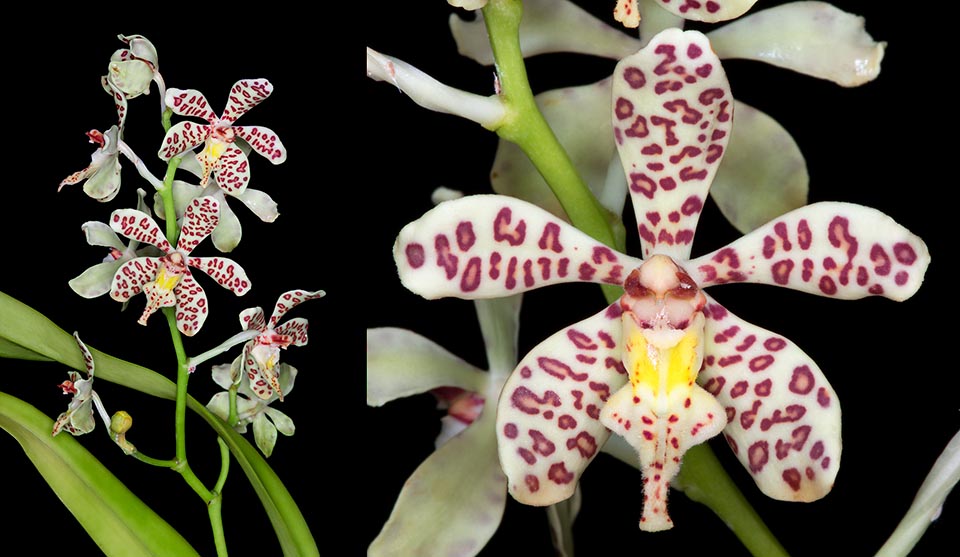Family : Orchidaceae

Text © Pietro Puccio

English translation by Mario Beltramini
The species is native to the Philippines (Luzon) where it grows on the trees of the humid forests or on calcareous rocks.
The name of the genus is the combination of the Greek substantives “θρίξ” (thrix) = hair and “γλῶττα” (glotta) = tongue, with reference to the down present on the labellum; the species is honoured to the French grower R. Guibert.
The Trichoglottis guibertii (Linden & Rchb.f.) Rchb.f. (1872) is an epiphytic or lithophytic monopodial species with cylindrical stems enclosed by the imbricate foliar bases and from where depart robust aerial roots. The leaves are nastriform with irregularly bilobed apex, alternate, distichous, coriaceous, of dark green colour. Panicle axillar inflorescences, erect or drooping, bearing numerous fleshy flowers, of 4-5 cm of diameter, of cream white colour with red anelliform spots, slightly odourous. Obovate to spatulate sepals and petals with obtuse apex, trilobed labellum with short spur at the base, lateral lobes erect on the sides of the column and pandurate median lobe with obtuse apex, tomentose.
It reproduces by seed, in vitro, and through the young plants that are produced, numerous, at the base.

Rare in cultivation, Trichoglottis guibertii is native to Philippine forests, where grows epiphyte or lithophyte on calcareous rocks. Nastriform leaves and 4-5 cm flowers © Giuseppe Mazza
The species is reported in the appendix II of CITES (species whose trade is internationally ruled).
Synonyms: Cleisostoma guibertii Linden & Rchb.f. (1862); Vanda guibertii Linden ex Rchb.f. (1872); Staurochilus guibertii (Linden & Rchb.f.) Christenson (1994).
→ For general notions about ORCHIDACEAE please click here.
